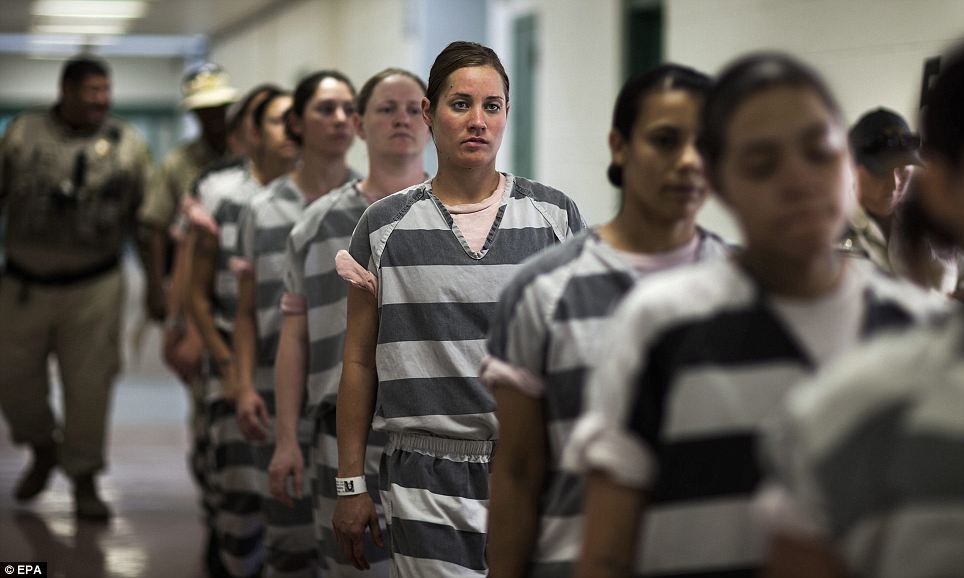LatinaLista — The female prison population has increased 646% in the past three decades, primarily due to inmates receiving sentences for nonviolent, low-level offenses.
The United States imprisons more women than any other country, all at the taxpayer’s expense. Why is this number growing so dramatically? Boston University’s Master of Criminal Justice online program takes a closer look at the exploding female prison population in the United States in the infographic below.

Boston University’s Master of Criminal Justice online programå
Although the U.S. is one of the most developed nations in the world, it has the second highest incarceration rate with 716 prisoners per 100,000 residents as of 2013. This roughly translates to 2.2 million people, or 0.69% of the population, behind bars. China, the world’s most populous nation, has 1.7 million prisoners. In Russia, 681,600 people, or 0.47% of the population, are in prison. Brazil and India have incarceration rates of 0.27% (548,000) and 0.03% (385,000) respectively.
U.S. Correctional System Statistics
By the end of 2014, the U.S. had 1,719 state prisons, 102 federal prisons, 2,259 juvenile correctional facilities, and 3,283 local jails. Although these facilities have an occupancy rate of 99%, the per capita cost of incarceration for all U.S. inmates increased from $21,603 to $29,291 in 2013. Additionally, the U.S. Bureau of Prisons’ appropriations increased from $3.7 billion in 2000 to $6.5 billion in 2013.
Global Female Prison Population Trends
At the end of 2012, 625,000 women and girls around the world served sentences of imprisonment. Nearly one-third, or 201,200, of the 625,000 women and girls served sentences in the United States, 84,600 in China, 59,200 in Russia, 35,596 in Brazil, and 29,175 in Thailand. The global female prisoner population has grown more than 16% since 2006 in all 187 countries included in the ICPS World Female Imprisonment list. Of the 16%, the Americas had the highest increase of 23% while Europe registered a 6% increase in female prisoners.
Females account for roughly 10% to 15% of all arrests. In addition, they account for 10% of total prosecutions. Some countries imprison a significant number of women for drug-related crimes. These include Thailand, Portugal, Greece, Italy, Sweden and Russia.
An In-depth Look at the Female Prison Population in the United States
In 2000, the rate of U.S. female prisoners per 100,000 residents stood at 55.6 and climbed to 66 by 2005. In 2010, the rate dropped to 63.5 before rising slightly to 64 in 2012. In 1980, there were 15,118 women incarcerated. This number escalated to 112,797 in 2010, representing an increase of 646%. As of 2010, more than 1 million women were under the supervision of the criminal justice system, with 112,797 in prison, 93,300 in jail, 712,084 on probation, and 103,374 on parole.
Overall, female inmates comprised 9% of the total U.S. prison population. From 1991-2011, the number of women imprisoned annually for violent crimes rose from 4,756 to 8,718, an 83% increase. The percentage of women convicted for property-related crimes between 1991 and 2011 was higher compared to men. A slight decrease in female property crimes occurred from 2006 (19,558) to 2011 (17,057).
A significant number of women were incarcerated for drug-related crimes between 1991 and 2011. During this time period, drug crimes made up the majority of new female court commitments and most readmissions (46.4%) were sentenced drug offenders. In 2011, the percentage of drug offender readmissions dropped significantly to 33%.
The Demographics of Female Prisoners in the United States
In 2012, 18.1% of female prisoners were aged 30 to 34 years. Black women aged 18 to 19 were almost five times as likely as white women in the same age bracket to be imprisoned.
In 2013, 49% of female prisoners were white, 22% were black, 17% were Hispanic, and 12% were of other races. While 9.7% of U.S. women are Hispanic, 15% of state female prisoners and 32% of federal female prisoners are Hispanic. From 2000 to 2010, the incarceration rate decreased 35% for black women, increased 28% for Hispanic women, and increased 38% for white women.
Female vs. Male Offenders
The percentage of white women incarcerated is much higher than that of white men, with 49% compared to 32%, respectively. Black males make up 37% of the imprisoned population, compared to 22% of black women. Hispanic males account for 22%, compared to 17% for women. For both men and women, the incarceration rate is higher per 100,000 residents for black individuals than other races.



